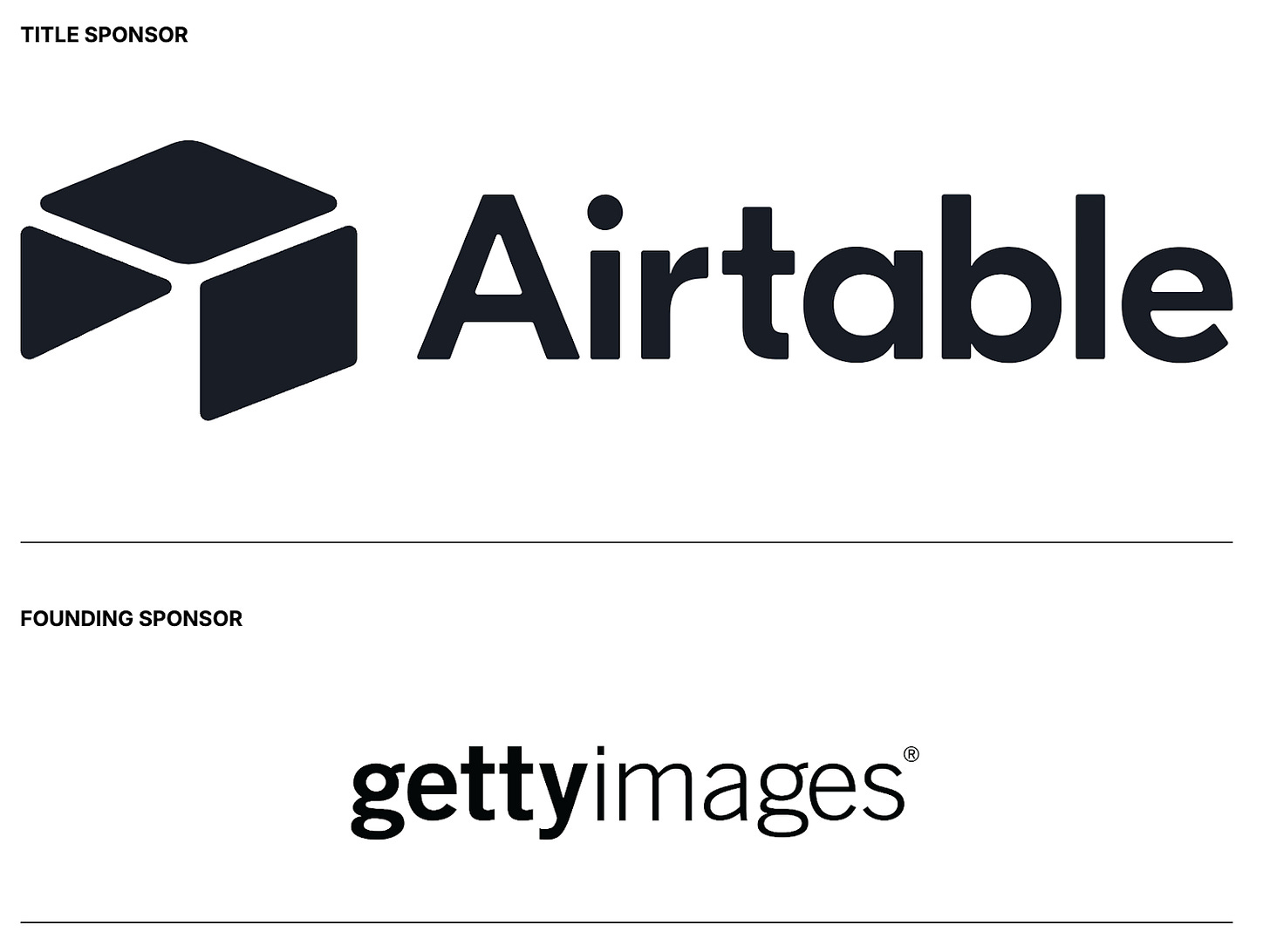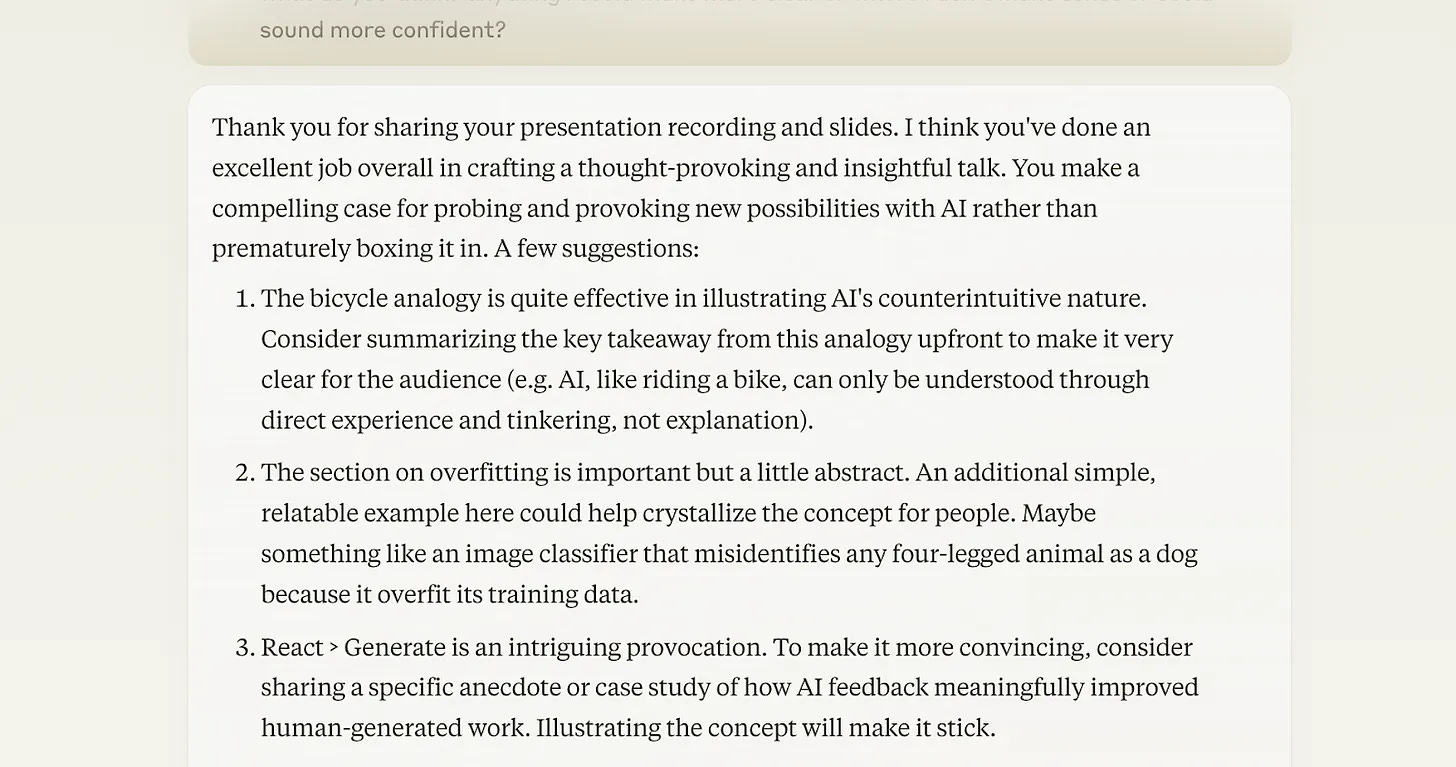React > Generate // BRXND Dispatch vol. 059
Some thoughts on where marketing orgs can get started with AI.
You’re getting this email as a subscriber to the BRXND Dispatch, a (roughly) weekly email at the intersection of brands and AI. The next edition of the BRXND Marketing X AI Conference will be in LA on 2/6. If you’re interested in attending, we just put a few early bird tickets on sale for 15% off. If you’re interested in sponsoring, we’ve got a form for that as well. (Oh, and if you want to speak or know someone who should, let me know that too.)
A theme that comes up a lot in conversations with brands is where to get started. Just this week, three brands asked me the same question: where do we start? My advice? Start with AI as a tool for feedback before generation. That seems pretty antithetical to a technology we’ve dubbed “GenAI,” but in many ways, it’s more interesting that AI can read and understand our writing than it can create its own.
Here’s a story I told at my conference:
Months ago, I was sitting with a friend of mine who runs an innovation agency, and we were talking about some AI tools we had seen that were specifically focused on generating strategy and insights. Like a lot of AI marketing tools, this sounds like a good problem to solve—who wouldn’t want more insights?
But we both felt a little uneasy about it, not because we were threatened by it, but because neither of us was sure that what was actually needed was more insights. As we dug deeper, what he said was that he had a team full of talented strategists who were quite capable of coming up with insights—in fact, that was what they liked to do best. Their biggest challenge was selling those insights to clients. That’s where he spent most of his time as CEO: helping the team to sell their work.
There are a few things in here that are worth unpacking:
Most of the organizational bottlenecks are about feedback: I used to run a 200-person company, and many people needed my time. I obviously wasn’t trying to be a bottleneck, but I often became one. So were the people that reported to me and the people that reported them. That’s just the way things work. Most managers' jobs should focus on unblocking people, and AI offers an interesting way to help solve that.
AI companies have jumped to generation because that seems like the problem: I had a conversation about a year ago with a company that insisted to me that the biggest problem marketers had was that they needed more creative ideas. Anyone who has worked in or around large brands knows that’s not the case: the real problem is finding great ideas that can actually be executed.
Feedback is a lot less scary: Last but definitely not least, it’s just less intimidating to have the AI be a reader than a writer. It feels a lot less competitive to most folks. The goal of most organizations at the moment is to find ways to engage their teams with AI, which is a fundamental factor to consider.
We interrupt this newsletter to offer a word of thanks to our sponsors for BRXND LA 2025. Airtable is operations for the AI era. Getty Images is a preeminent global visual content creator and marketplace with a commercially-safe AI platform. A huge thanks for their support. If you’re interested in sponsoring BRXND LA 2025, please be in touch.
Getting Down to Details
With all that said, where are some places to start with this approach? Here are a few we’ve had success with both internally and externally.
Presentation/Pitch Feedback
While working on my presentation for the NYC conference in May, I did what I always do: write an extended essay version, turn it into slides, and trim it down by running through the presentation. After I felt pretty good about it, I recorded myself giving the presentation and then gave Claude the PDF, the transcription of my presentation, and the original script and asked for tough feedback. What came back was terrific, particularly the bit that suggested I needed to bulk up my “React > Generate” by “sharing a specific anecdote or case study of how AI feedback meaningfully improved human-generated work. Illustrating the concept will make it stick.”
Editing/Brand Voice
One of the simplest ways to get going with this is to build a GPT/Project focused on giving feedback based on the brand voice/values. I have one that I use regularly, which is built out of a voice guide I’ve written and incorporates core principles from Strunk & White’s Elements of Style, my style guide of choice. At some point, I’ll share the whole thing, but for the sake of brevity, here’s just the editorial principles section:
<editorial_principles>
Follow these core principles from Strunk & White:
1. Make every word tell
2. Write in a way that comes naturally
3. Revise and rewrite
4. Do not explain too much
5. Prefer the standard to the offbeat
6. Use definite, specific, concrete language
7. Omit needless words
8. Avoid fancy words
9. Express coordinate ideas in similar form
10. Keep related words together
</editorial_principles>
Structured Feedback
For more structured problems, building tools that can enumerate the principles and give feedback on them individually is incredibly powerful. For a recent project, we built a tenet analyzer. Tenets, if you’re not familiar, come out of Amazon and ultimately represent the guiding principles of a team. They are meant to go well beyond generic values by helping people actually make difficult decisions and trade-offs and not being generic. This presents a perfect opportunity to use AI as a feedback tool, helping someone refine their output. As a simple example, here’s the output when I put in the BRXND programming tenet “Doers > Speculators:”
(I hope to release this publicly soon as I think it’s pretty neat.)
That’s it for now. This was a long one. Thanks for reading, subscribing, and supporting. As always, if you have questions or want to chat, please be in touch.
Oh, and don’t forget to buy your early bird ticket for BRXND LA.
Thanks,
Noah





